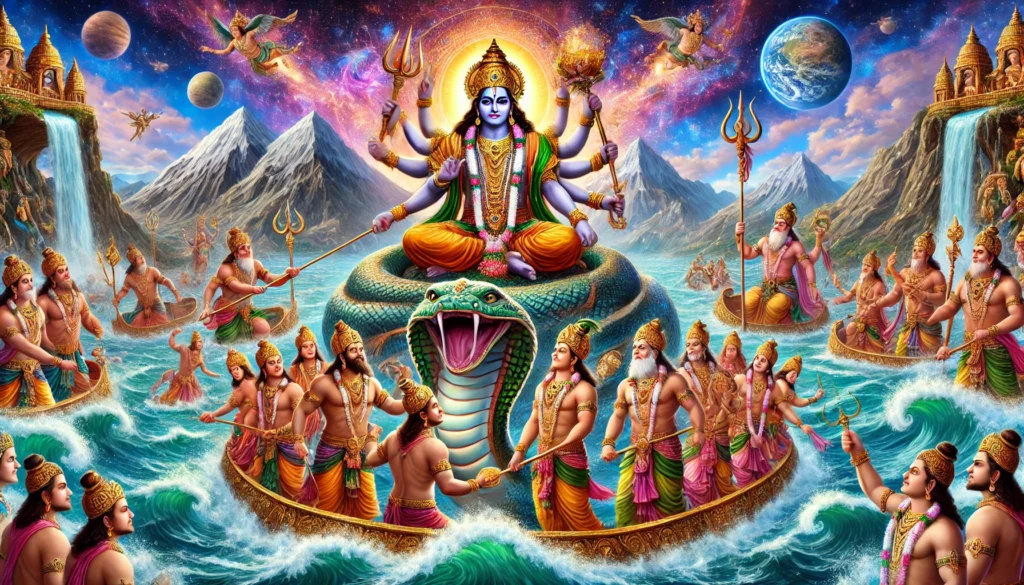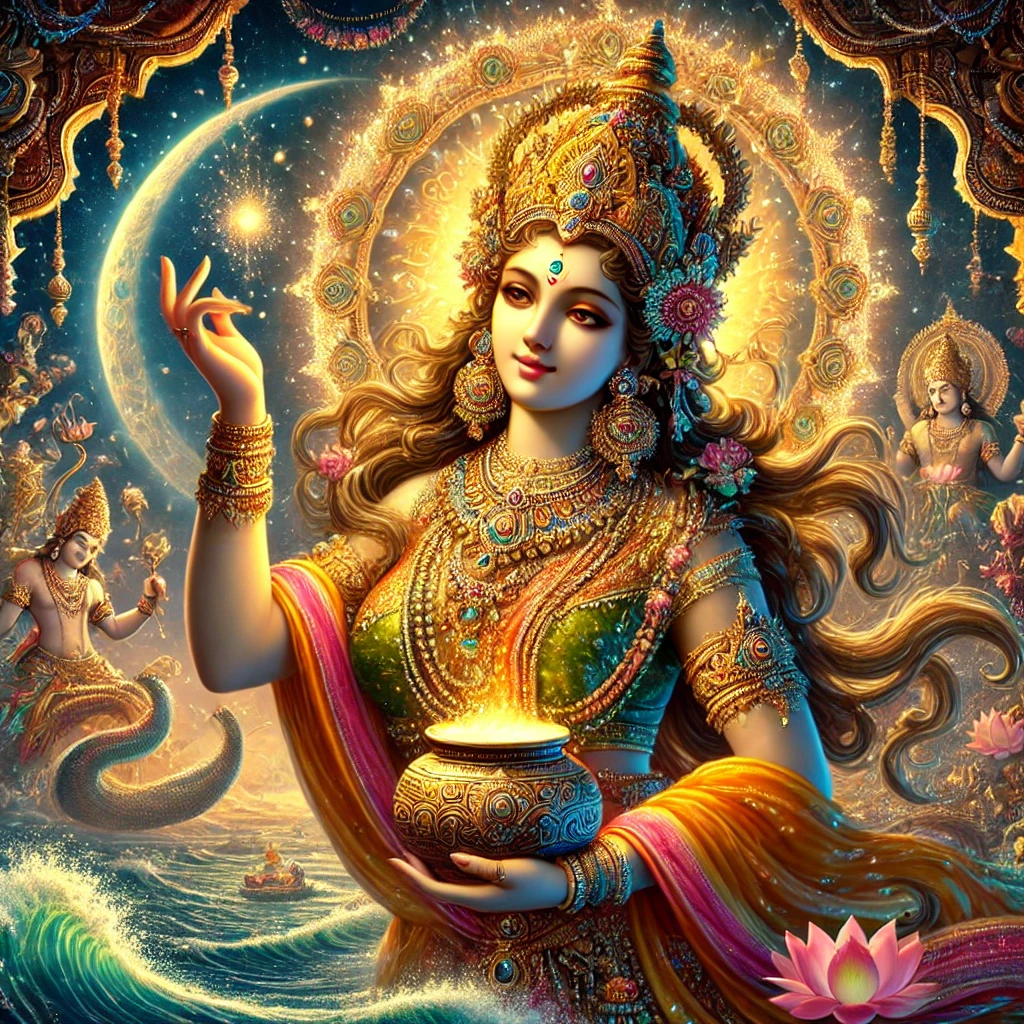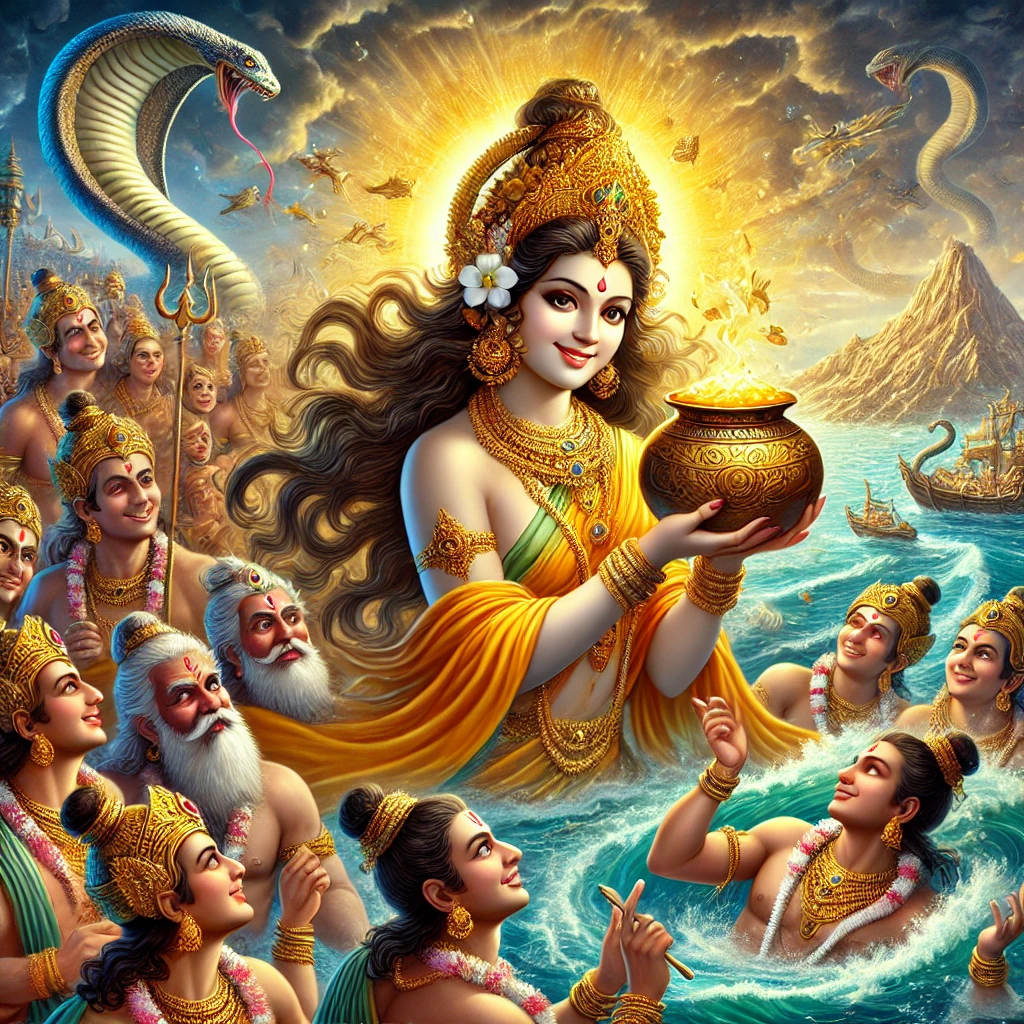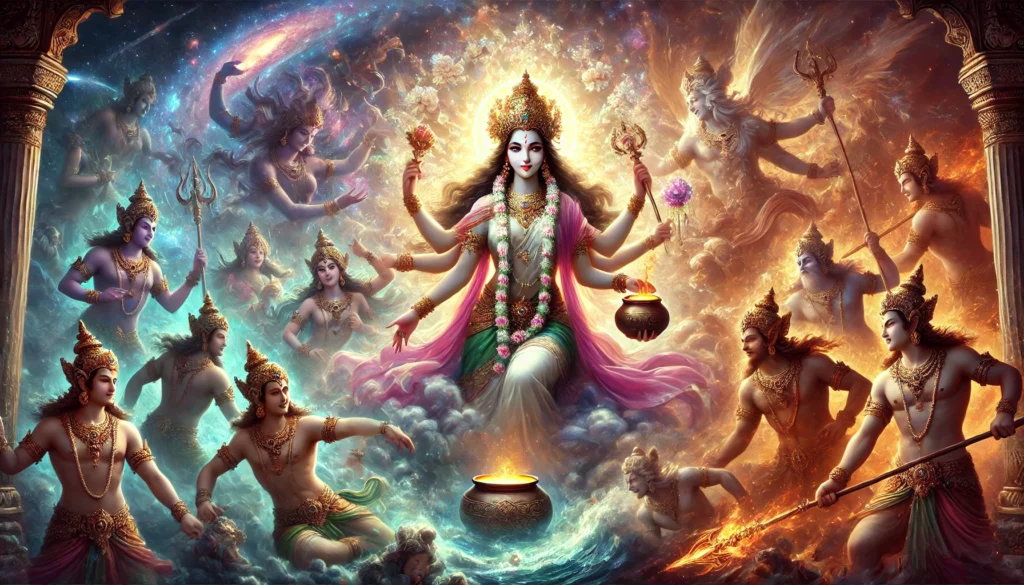The Samudra Manthan, the churning of the cosmic ocean as described in the Vishnu Purana and Bhagavata Purana, is a story of collaboration, conflict, and divine intervention that transcends mythology. At its heart lies the episode of Mohini, Vishnu’s incarnation as an enchantress, whose strategy to distribute the nectar of immortality offers profound insights into the dynamics of decision-making, resource allocation, and the balance of power. This narrative, rich in layers and symbolism, mirrors the principles of game theory, presenting a celestial blueprint for achieving strategic equilibrium in moments of great tension.

The cosmic churning began as a rare alliance between the Devas and Asuras, sworn adversaries in an eternal struggle. Bound by the promise of Amrit, the nectar of immortality, they agreed to work together, using Mount Mandara as the churning rod and Vasuki, the serpent king, as the rope. Yet this fragile partnership was riddled with mutual distrust. The Asuras, guided by their inherent tamas, plotted to seize the nectar for themselves, while the Devas, representing sattva, sought to ensure cosmic order. This tenuous balance of cooperation and conflict resembled the dynamics of the Prisoner’s Dilemma, where collaboration offers collective benefits but individual incentives to betray persist. The alliance was not one of mutual respect but of temporary necessity, each side waiting for an opportunity to outwit the other.
At the height of the churning, as treasures and perils emerged from the ocean, the tension reached its peak with the appearance of the nectar. The Asuras, confident in their superior strength, prepared to claim it. It was then that Vishnu, ever the preserver of dharma, assumed the form of Mohini—a being of unmatched beauty and charm. The Bhagavata Purana describes Mohini’s appearance as mesmerizing, with her form captivating even the wisest sages. Her entrance was not merely a distraction but a calculated intervention. Mohini offered to mediate the distribution, promising fairness and peace. The Asuras, entranced by her allure and reassured by her words, agreed to her proposal, unaware of her true intentions.

In assuming the role of mediator, Mohini positioned herself as a first mover, setting the rules of engagement in what game theorists would call a Stackelberg leadership model. The Asuras, lacking Vishnu’s divine insight, were at a disadvantage, their decisions shaped by asymmetric information. Mohini’s apparent impartiality was a masterstroke, a blend of charm and strategy that exploited the Asuras’ short-term focus and their susceptibility to flattery. Her assurance that the distribution would be fair manipulated the Asuras into compliance, delaying their suspicions long enough for the Devas to consume the nectar.

The process of distributing the nectar was a carefully orchestrated sequence of actions. Mohini separated the Devas and Asuras, seating them in two distinct lines. She served the Devas first, pacifying the Asuras with soothing words and a disarming smile. When they grew restless, she urged patience, assuring them that their turn would come. This tactic exploited the concept of time inconsistency, where immediate reassurance outweighed the Asuras’ long-term vigilance. By the time they realized the nectar had been consumed by the Devas, it was too late to intervene. Mohini’s strategy demonstrated how non-binding promises, often dismissed as “cheap talk,” can manipulate opponents into suboptimal choices when delivered with skill and timing.
The Vishnu Purana emphasizes that the prioritization of the Devas was not arbitrary but rooted in cosmic necessity. As sustainers of order, their survival was essential to maintaining the balance of the universe. This reflects the principles of mechanism design, where rules are engineered to achieve optimal outcomes for the broader system. The Asuras, though outmaneuvered, were not entirely excluded from the divine plan. Their role in the churning and the cosmic cycle ensured their continued relevance, albeit without the immediate reward of immortality.

This episode is not an isolated narrative but part of a larger cosmic framework. The struggle between Devas and Asuras is cyclical, recurring across ages as described in texts like the Mahabharata. Each iteration features Vishnu’s interventions, whether as Kurma, Narasimha, or Krishna, to restore balance. Mohini’s actions during the Samudra Manthan introduced a credible threat, warning the Asuras of divine intervention in future conflicts. Over time, this established a subgame-perfect equilibrium, where both sides internalized the consequences of destabilizing actions, ensuring a fragile but enduring cosmic harmony.
The parallels between Mohini’s strategy and other episodes in Hindu mythology are striking. When Krishna mediated between the Pandavas and Kauravas in the Mahabharata, his ability to leverage asymmetric information and guide decisions toward dharmic outcomes mirrored Mohini’s intervention. Similarly, when Narasimha appeared to protect Prahlada and uphold dharma, his actions demonstrated the necessity of divine recalibration in moments of imbalance. These narratives, like Mohini’s mediation, highlight the role of strategy and foresight in maintaining universal equilibrium.
![]()
At its core, the Mohini episode is a profound exploration of ethical decision-making and strategic design. Vishnu, as the ultimate game theorist, does not merely deceive the Asuras but creates a framework where cosmic welfare takes precedence over individual gain. Mohini’s actions, often dismissed as trickery, are better understood as divine play—a lila that harmonizes human frailties with higher order. The nectar of immortality, far from being a simple prize, becomes a symbol of the delicate balance required to sustain the universe. In the hands of Mohini, it is distributed not to favor one side but to ensure the continuity of the cosmic cycle, reminding us that even in the most competitive of games, there is a greater equilibrium at play.
